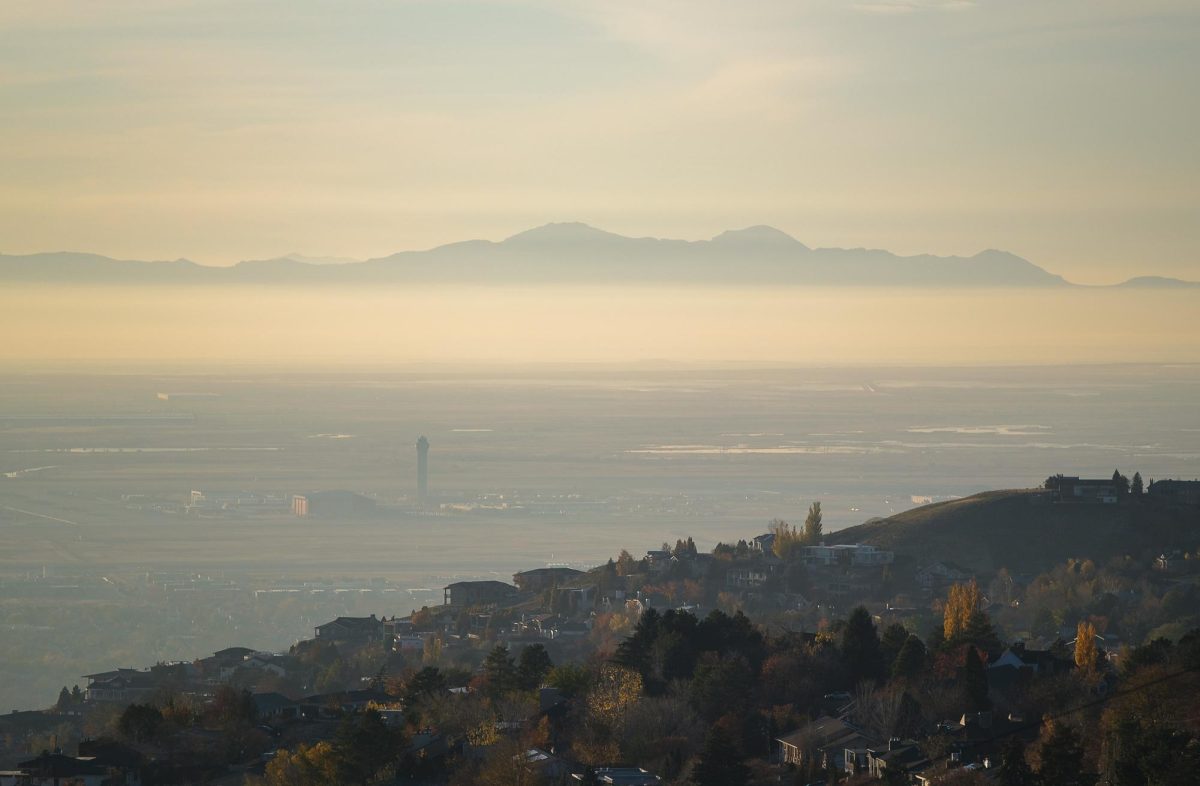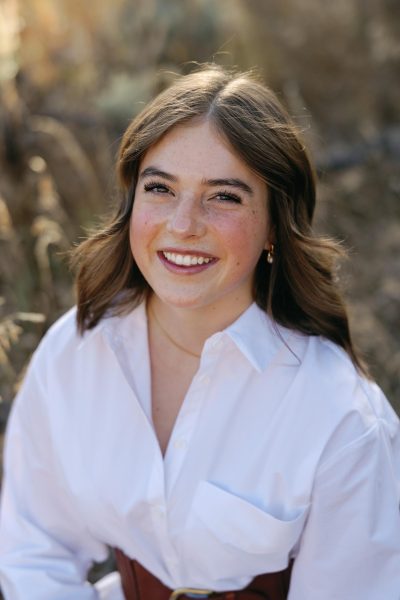Looking out the window throughout the Salt Lake Valley, all one sees is gray these days. The real troopers make the trek outside to stay active, but seasonal depression kicks in quickly for some of Salt Lake City’s population. With significantly worsening air quality, it is also dangerous to participate in activities outside for extended periods of time.
In a normal atmospheric environment, colder air is at the top, and warmer air is at the bottom. As elevation increases, temperature decreases. However, during an inversion cycle, warmer air rises above, causing the air below it to cool faster than normal. This traps cold air, air pollution and other molecules within the air underneath the warmer layer.
Gannet Hallar, associate professor of Atmospheric Sciences at the University of Utah, said that the development of an inversion is still somewhat of a mystery.
“[The cause of an inversion] is not something that we understand in totality. I would say that what is needed is to continue doing research on understanding how particles form in these situations, and what are the precursors that allow for that formation,” she said.
Over the last few years, Salt Lake City’s air pollution levels have gotten worse. In 2024, the urban municipality ranked tenth for high ozone pollution. With help from Utah’s state government, there is a push to reduce air pollution in the coming years.
“We’re very fortunate to have great people working at the Division of Air Quality within the Department of Environmental Quality within the State of Utah,” Hallar said. “These people are making very robust measurements of PM 2.5, as well as forecasting when they expect there to be poor air quality days. In that they provide very clear recommendations on what to do to help improve the air quality during these persistent cold air pools.”
Along with the work within the Utah Division of Air Quality and Environmental Quality, there are small and simple tasks those living in the Salt Lake Valley, including U students, can do to make a difference regarding this issue.
“One of those recommendations by the Division of Air Quality includes to try to take public transportation and to limit your amount of driving. We also need to limit wood burning as much as possible during these time frames,” Hallar said.
Participating in these unofficial initiatives can make a world of difference. Cutting down on car usage, reducing idling, and using more public transportation has the potential to reduce environmental impact, improve personal finances and save natural resources.
While air pollution is a growing problem, Utah’s air quality has been a significant concern since 1847. As Utah was settled during this time, people burned wood for heat in homes, cooked meals and more. The smoke from such activities lingered in the air for days at a time. With the development of industries and the introduction of new innovations like gas and coal, air quality in the valley has worsened heavily since.
Although many Utahns understand the inversion and have experienced it every winter, out-of-state students attending the U have quickly learned its impact on the environment around them.
Tatum McKinley, a freshman and business major from Oregon, noticed the effects of the inversion in comparison to her home state.
“I heard a little bit about the inversion and air quality before I came to the university, but a lot of people have said that up here at the U you get out of it,” McKinley said. “Since being here, I notice it some days, but it doesn’t happen as much as I thought it would here in Utah; it is a lot different from where I am from in Oregon; it always rains, and the air smells so fresh.”
Tommy Hoggan, a kinesiology major and sophomore at the U, grew up in Salt Lake City, playing sports throughout high school. Although he has gotten more used to inversion and its effects, there were some annoyances.
“Growing up in Salt Lake, I always loved to participate in outdoor activities. It was unfortunate when these activities were affected by the inversion,” Hoggan said. “The poor air made it harder to breathe while exercising, and on a few occasions, these activities were canceled due to the unsafe air quality. I think that the inversion is getting worse.”
All in all, the inversion can be a challenge for many, and its effects are becoming more prevalent as time passes. Taking proper measures and encouraging others to do the same can help reduce the impact in the future.
“Honestly, the inversion is annoying. All you need to do is go skiing, and you get out of it,” McKinley said.




